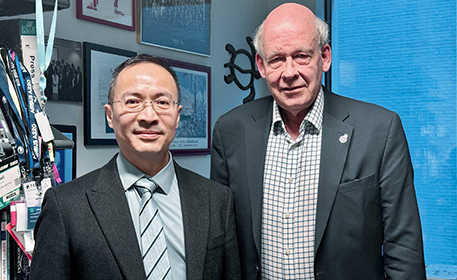Reported by Wang Shaoshao

People’s Daily Online, Beijing, China, August 24 (by Wang Shaoshao)—From milk powder to mobile phones, and from shoes and clothing to health products, “made in China” is ever more deeply embedded in people’s daily lives as we enter the new consumption era. Chinese brands are increasingly finding favor with consumers. Tea, silk and other products with distinct elements of traditional Chinese culture enjoy great prospects in the consumer market. Today, our domestic brands are embracing new opportunities for development.
The popularity of Guochao brands—otherwise known as China chic brands or trendy brands that incorporate traditional Chinese style and culture—has increased more than five-fold compared with a decade ago, with 78.5 percent of consumers preferring Chinese brands over foreign brands by 72 percent, according to the Guochao Brands Young Consumers Insight Report released in June 2022. Chinese brands with unique local features or made using traditional techniques are starting to make their presence felt in the consumer market, as domestic players thrive in the age of new consumption. With this in mind, how do brands create unique value and achieve long-lasting growth?
A surge in consumer interest in Chinese style and culture is unlocking the enduring value of traditional elements in Chinese brands, Noah Xie, President of Kmind Strategy Consulting, said during a conversation on “Industry Development over the Past Decade” with the People’s Daily Online. Indeed, as well as emerging brands, traditional ones are trying to uncover time-honored cultural value and meanings and communicate them to consumers through new channels and methods as a way to differentiate themselves from the competition.
“It should be noted that having an edge in consumer awareness is an important operational indicator for companies and a way for brands to survive cut-throat competition,” said Weishan, who also believes that combining our traditional culture and wisdom with business practices help create unique brand value and reinforce brand-specific consumer awareness.
When asked about how companies should strategically respond to these new changes, Weishan stressed the importance of focusing on brand perception management as a key operational indicator in addressing consumer demand for quality upgrades, in addition to market share, business size, and net profit.
According to Weishan, brands must make it clear to customers “why they should choose me over my rivals and must build such a brand identity by connecting the brand to its category”. In other words, “when consumers think of the brand, they think of the category; and vice versa.” He believes that fostering such a brand-specific awareness among consumers helps a company create the conditions for victory and ultimately win without fighting.
“To build a traditional brand with Chinese features, companies should dare to embark on an unusual path and provide unique value for consumers,” said Weishan, arguing that businesses need to take into account “how customers feel about the brand” so as to establish an advantage in brand awareness by leveraging various resources including channels, talents, and supply chains.
Without traditional Chinese elements, the boom in domestic brands of unique value would not have been possible. “Eastern wisdom is the cultural gene from which Chinese civilization springs. It nurtures today’s business world, inspiring ways for brands to achieve long-lasting development. In the future, we hope to work with more Chinese companies to achieve large-scale transformation and contribute to high-value economic development in China,” said Weishan.






